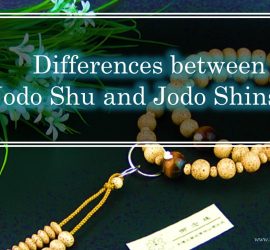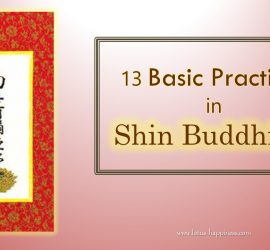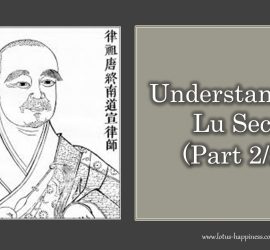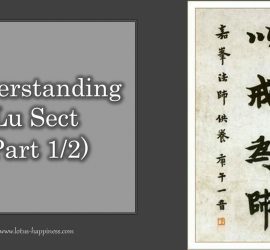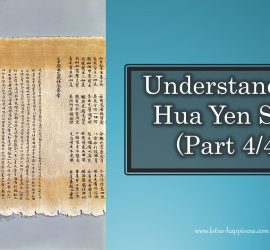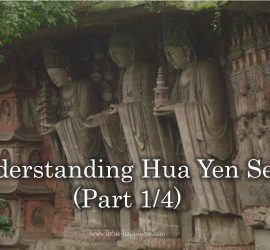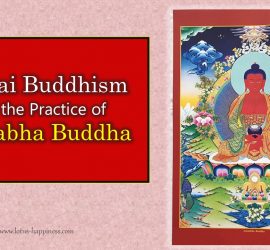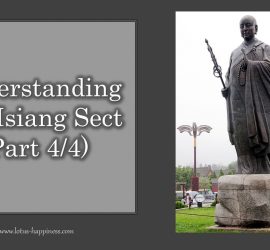Differences between Jodo Shu and Jodo Shinshu Among the various Buddhist sects, Pure Land Buddhism is the single largest Buddhist sect practiced by most people in China and Japan. In China, it is known as the Jing Tu Zong (净土宗), in Japan, it is known as the Jodo Sect. […]
Buddhist Sects
13 Basic Practices in Shin Buddhism Pure Land Buddhism is the most widely practiced form of Buddhism in China, Japan, Taiwan, Hong Kong, Vietnam, Malaysia and Singapore. Shin Buddhism, also known as Jodo Shinshu, is the largest Pure Land denomination in Japan. Founded by Buddhist reformist Shinran Shonin (1173- […]
Understanding Lu Sect (Part 2/2) Precepts for the Seven Assemblies The status of the seven assemblies is determined by the precepts that they uphold. Upasaka [優婆塞] The male lay Buddhists who uphold the Five Precepts, i.e. Not to kill Not to steal Not to commit adultery Not to make false speech […]
Understanding Lu Sect (Part 1/2) Name ‘Lu’ [律] is transliterated in Chinese from the Sanskrit word Vinaya. It means the code of monastic discipline, which is one of Tripitaka. Lu-tsung [律宗] is actually Vinaya Sect. It is also known as Nan-shan-tsung [南山宗]. As the founder of Lu-tsung , Master Tao-husan [道宣] lived in Zhong-nan-shan [終南山], this sect is […]
Understanding Hua Yen Sect (Part 4/4) The Illustration with the Golden Lion ‘On the Golden Lion’ [金獅子章], a treatise written by Master Fa-tsang [法藏], is a very significant scripture to illustrate the Hua-yen doctrines. First of all, it illustrates the Principle of Dependent Arising. Gold has no inherent nature of its own. […]
Understanding Hua Yen Sect (Part 3/4) ‘Li’ and ‘Shih’ In Hua-yen’s doctrine, it is used to interpret all Dharmas in two different aspects: one is ‘Li’ [理] and the other is ‘Shih’ [事], which are two important words in the vocabulary of this sect. ‘Li’ is transliterated from a Chinese word, which means […]
Understanding Hua Yen Sect (Part 2/4) Five Divisions and Ten Schools Hua-yen sect formulated a complete doctrine embracing all the aspects of Buddhist teachings, and can be classified into Five Divisions and Ten Schools [¤±Ð¤Q©v]. Five Divisions The Teaching of Sravakas (Sound-hearers) [¤p¼±Ð]– This is the Hinayana found in the Agama Sutras, […]
Understanding Hua Yen Sect (Part 1/4) Name Hua-yen [華嚴] is the pronunciation of Flower Adornment, which is translated from the Sanskrit word Avatamsaka, the name of one of the most famous sutra in Buddhism. This sect takes its name from the Avatamsaka Sutra, which is the principal text of the sect. Literally, […]
Tendai Buddhism and the Practice of Amitabha Buddha By Tendai UK AMIDA BUTSU 阿弥陀仏 (AMITABHA BUDDHA) Originally, Amida was a Bodhisattva monk called Dharmakāra (Hōzō 法蔵). He was a king who, like Shakyamuni, gave up his thrown to become a monk. After eons of practice, he became Dharmakāra Bodhisattva, […]
Understanding Fa Hsiang Sect (Part 4/4) Three Manifestation Potentials [三能變] According to Fa-hsiang ‘s doctrine, all sentient beings and non-sentient matters are manifestations of consciousnesses. The seeing portion is the ability to be conscious and aware, while the seen portion is the phenomena in the entire world. Both portions are the […]

